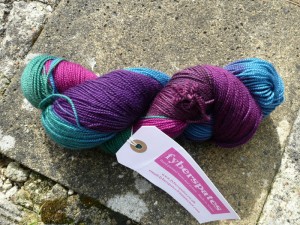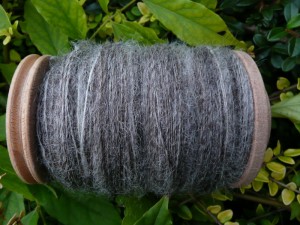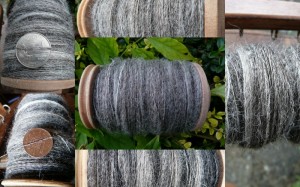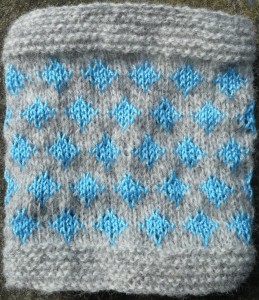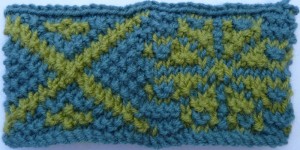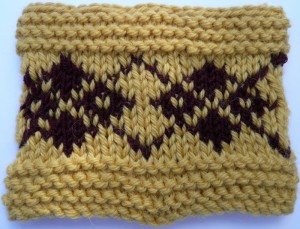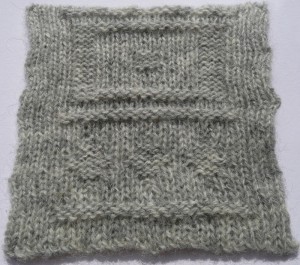Friday 11th and Saturday 12th September were the dates for this years IKnit show in London. This is the first time it has been spread across two days, and I went on both.
On Friday morning I went to the Twined Knitting class held by the Dutch Knitters, Carla and Hilly. They were fabulous and I had a great time. Here we all are working hard:
They also very kindly brought lots of samples of several different examples of twined knitting, here are just a few of them:
A really interesting technique and one I am looking forward to exploring more.
During the workshop we were working on a pattern for a little pouch, which cleverly incorporated the major techniques of twined knitting. I finished mine on the train on Saturday morning so was able to show them how it had come out.
My cast on was a bit tight, but I think I have got the idea now. This is just the right size for my iPod too, which is very convenient 🙂
On Saturday lunch time I went to a talk by the always excellent Joyce Meader on military knitting from the Crimea to the present day. She was hilarious and informative as always, and brought an incredible amount of stuff with her for us to look at. The only thing which I thought was a shame with this talk was that as the timing clashed with both the morning workshops and the afternoon ones so there weren’t that many people who came to hear it.
As seems to be inevitable with these events I didn’t escape without a few purchases. First, a lovely skein of Fyberspates Sheila’s sock in colour Jewels, 100% superwash merino, 100g, 365m.
Next some laceweight in the brightest green you have ever met. This is Tosh Lace from Madeline Tosh, colour Seaglass, 868m per skein (I bought 2), 100% superwash merino.
Then two balls of Crystal Palace Mini Mochi, 80% merino, 20% nylon, in colour 108 from Gill at the Woolly Workshop. This is very soft.
And the last yarn I bought was a ball of crazy zauberball by Schoppel Wolle in Tropical Fish (I do think the German frische Fische sounds better) from Bev at Knitting4Fun.
I did buy some fibre too from John Arbon. This bag contains, 400g of 100% white fine alpaca, 22 – 26 micron, 400g of 100% champagne fine alpaca, 22 – 26 micron, 400g of a blend of 70% champagne alpaca, and 30% white merino, 22 – 26 micron, and finally a little paper bag with 100g of undyed tussah silk top.
And lastly I bought a fun card from Tilly Flop. I’m not going to put a picture up because I am thinking of giving it to Mummy for her next birthday and she does read the blog from time to time.
There were a good range of stands, and nice wide aisles between them. From a customer perspective it was very nice that it wasn’t as busy as some of the bigger shows, since it meant you could easily get in and see all the lovely things to buy, without having to elbow a couple of dozen people out of the way first. There seemed to be better seating than last year so I could actually sit down to eat my lunch this time which was nice.
Although all the stuff is of course very nice, the best bit of the two days was the people. It was lovely to meet up with so many knitting people, both those I already knew and people who were new to me. I had a wonderful time and am looking forward to next year! I had better get knitting with some of the stuff!



